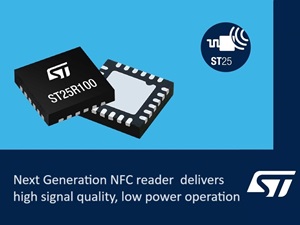
In 2022, 0.24 %of the total cryptocurrency transaction volume was identified as illicit, and this illegal funds transfer figure demands the critical need for effective transaction monitoring processes. This figure, based on transactions involving addresses controlled by ransomware actors, underscores the importance of regulating transaction monitoring to achieve financial excellence.
By implementing stringent oversight mechanisms, financial departments can address irregularities promptly. Notably, in 2019, the highest reported share of illegal transactions reached 1.9 % between 2017 and 2022, which spotlights the ongoing financial crime challenge. Its regulation ensures compliance in combating major monetary loss risks and fosters integrity, which assists in driving excellence in the financial sector.
Explore the Spectrum of Transaction Monitoring Methods
The process monitoring system of financial transactions utilizes diverse approaches to identify illegal funds transfers. KYT (Know Your Transaction) verification can be conducted using diverse methods to find illegal money transfers through imposters involved in money laundering and other related financial crimes. Some of the major methods of transaction monitoring process are given below:
Rules-Based Transaction Monitoring
The rules-based transaction monitoring process depends on the regulations and thresholds that have already been designed to identify illegal transactions. These defined regulations fully depend on compliance measures, threat indicators, and identified money laundering trends. When any conducted financial transaction is found to be exceeding the predefined rules and regulations, systems create alerts for executing scrutiny through compliance personnel.
Behavioural Analytics
Online transaction processing through behavioral analytics is executed by analyzing the regular fund’s transfer patterns with time and identifying illegal doings. The variations from the expected norms assist in finding the illegalities happening within financial institutions or accounts of fraudulent customers. Integrating the machine learning algorithms assists in scrutinizing the behavioral patterns and identifying subtle modifications in customer conduct that show money laundering activities.
Customer Risk Scoring
Transaction monitoring process through customer risk scoring is the most utilized way to find potential imposters within financial institutions. Customers possessing high-risk profiles due to abundant risk factors are reported for finding money laundering or terror funding conducts. The high-risk factors for illegal funds transfer include risky business relationships, geographic regions, and transactional history. High-risk users are subjected to more high-level monitoring by allowing financial departments to prioritize their resources on the most critical risks.
Link Analysis
Process monitoring through link analysis involves the examination of customers’ networks and associations between different entities, such as fund transfer history, users’ financial accounts, etc. By completely scrutinizing the customer’s associations with varied businesses and other entities, it defined a complex network of illegal activity such as terror funding involving financial accounts and factions.
Geospatial Analysis
Geospatial analysis examines the transactional credentials according to the geographical location to detect illegal patterns and trends. These strategies assist in identifying suspicious doings such as illegal funds transfer cross-border, in high-risk jurisdictions, and in the major processes of smurfing.
Frameworks for Transaction Monitoring Policies
There are defined rules for achieving financial excellence through a transaction monitoring process, which is usually regulated to identify suspicious activities within financial institutions. Some of them are given below to flag high risk transactions for further scrutiny.
Threshold Rules
Threshold rules are regulated for particular amounts or frequencies to generate alerts when exceeding the predefined fund’s transfer limit within a specific time.
Velocity Rules
Velocity of transaction monitoring identifies the number of funds transferred within the specific time frame. The greater number of transactions conducted within a particular time creates an emergency to report them.
Pattern Recognition Rules
These rules are designed according to specific behavioral patterns. The variations from the expected behavior lead to known money laundering procedures. These deviations are the biggest red flags identified within the financial institutions.
Customer Behaviour Rules
These regulations observe individual customer behavior and transaction patterns to identify anomalies or deviations from typical activity, such as abrupt shifts in transactional behavior.
The Bottom Line
The conduction of financial transactions within a specific framework and time tells a lot about the nature of its execution. High-risk transactions are often executed within a short time span and using changed geographical locations. To identify these illegalities, there are predefined rules and strategies for the transaction monitoring process. These effective approaches assist in combating financial crimes, which majorly lead to money laundering and terror funding frauds. To maintain the integrity of the financial institutions, it is advised to regulate the major strategies of the transaction monitoring process for enhanced efficiency. The conduction of process monitoring leads to better leads as it helps mitigate money loss crimes and improve the overall financial status of every institution.


















